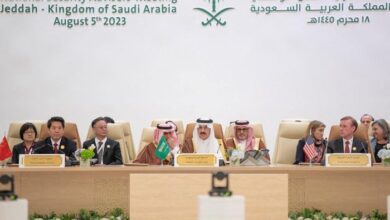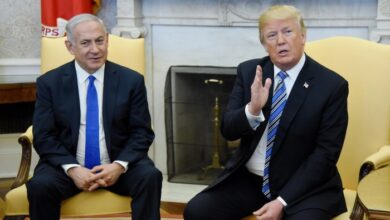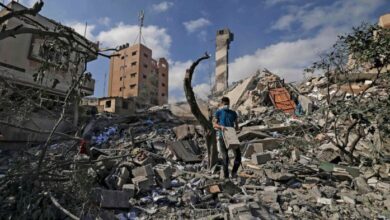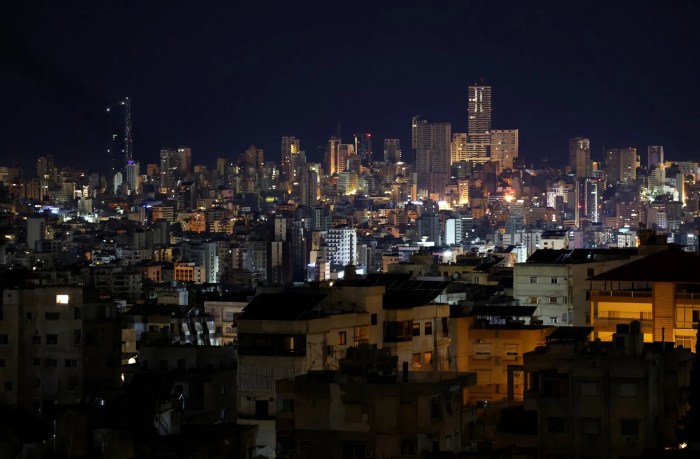
Lebanon Hezbollah Israel ceasefire what next? This complex situation demands careful consideration. The recent agreement brings a fragile peace, but the long-term implications are uncertain. We’ll explore the historical context, analyze the recent ceasefire, and delve into potential future scenarios, including humanitarian concerns, international involvement, and the economic impact. Understanding these interwoven factors is key to grasping the path ahead for the region.
The ceasefire’s success hinges on many factors. From the commitment of key players to the effectiveness of international involvement, the road to lasting peace is fraught with potential pitfalls. We’ll examine the conditions of the agreement, analyzing the role of various stakeholders and the immediate reactions to the truce. This analysis will offer insight into the dynamics of the conflict and the complexities of peacemaking.
Historical Context of the Conflict
The Lebanon-Israel conflict, a complex and protracted struggle, has deep roots stretching back decades. It’s a multifaceted conflict interwoven with political, religious, and territorial disputes, leaving a lasting impact on the region. Understanding this history is crucial to comprehending the current ceasefire and the potential future trajectory of the relationship.The conflict has involved multiple actors and periods of intense violence, punctuated by fragile ceasefires.
The motivations and actions of each party have evolved over time, reflecting shifting geopolitical realities and domestic pressures. Analyzing these factors is essential for a thorough understanding of the current situation and potential future developments.
Timeline of Significant Dates and Events
A clear timeline helps illustrate the key events that have shaped the conflict. These events, from the initial skirmishes to the present day, highlight the recurring patterns of escalation and de-escalation.
- 1948 Arab-Israeli War: The establishment of Israel led to a series of conflicts with neighboring Arab states, including Lebanon. This initial conflict laid the groundwork for future tensions.
- 1967 Six-Day War: Israel’s victory in the Six-Day War further solidified its presence in the region and heightened regional tensions. This war had a profound impact on the political landscape of the Middle East.
- 1982 Israeli Invasion of Lebanon: This invasion was a significant turning point, marked by significant loss of life and displacement of civilians. The invasion had long-lasting consequences for the region.
- Formation of Hezbollah: The formation of Hezbollah in the 1980s as a Shia Islamist militant group significantly altered the dynamic of the conflict, introducing a new player with strong ideological motivations.
- Multiple Ceasefires (1990s-2000s): Numerous ceasefires were attempted, but often proved fragile and short-lived. These periods of relative calm were frequently followed by renewed clashes.
- 2006 Lebanon War: This conflict highlighted the growing strength of Hezbollah and the difficulty in achieving a lasting peace. It also demonstrated the devastating consequences of warfare in densely populated areas.
Role of Hezbollah in the Conflict
Hezbollah’s emergence as a key player has profoundly impacted the conflict. Its role has evolved from a guerrilla group to a political and military force, wielding significant influence within Lebanon. Its actions have influenced the regional dynamics and contributed to the complexity of the conflict.
- Ideological Motivations: Hezbollah’s ideology and commitment to resisting Israel’s presence in the region have driven its actions throughout the conflict.
- Military Capabilities: Hezbollah’s military capabilities, demonstrated in conflicts such as the 2006 war, have significantly altered the balance of power in the region.
- Political Influence: Hezbollah’s significant political presence in Lebanon has further complicated efforts to achieve lasting peace.
Comparison of Past Ceasefires
Analyzing past ceasefires reveals patterns and recurring challenges. The effectiveness of past agreements can offer valuable insights into the current situation and future possibilities.
- Varying Effectiveness: Some ceasefires held for extended periods, while others proved short-lived. The factors contributing to the success or failure of these agreements are complex and multifaceted.
- Underlying Issues: Recurring issues like unresolved territorial disputes, differing political agendas, and the presence of armed groups often undermined the stability of ceasefires.
- Lessons Learned: The experiences from previous ceasefires offer valuable lessons for current negotiations and future peace efforts.
Political and Social Factors Contributing to the Conflict
The conflict is rooted in a complex web of political and social factors. Understanding these factors is essential for comprehending the motivations behind the actions of the various parties involved.
- Territorial Disputes: Disagreements over land and resources have played a significant role in the conflict.
- Political Tensions: Political tensions between Israel and its neighbors, including Lebanon, have consistently fueled the conflict.
- Regional Power Dynamics: The influence of regional powers and their competing interests have contributed to the instability in the region.
Key Players Involved
The conflict involves numerous actors, each with their own motivations and interests. Identifying these key players is crucial for understanding the complexities of the situation.
| Player | Role | Motivations |
|---|---|---|
| Israel | Occupying Power | Security concerns, regional influence |
| Lebanon | Host Country | National sovereignty, stability |
| Hezbollah | Armed Group | Resistance against Israel, political influence |
| Other Regional Actors | Influential Parties | Geopolitical interests, regional alliances |
The Recent Ceasefire
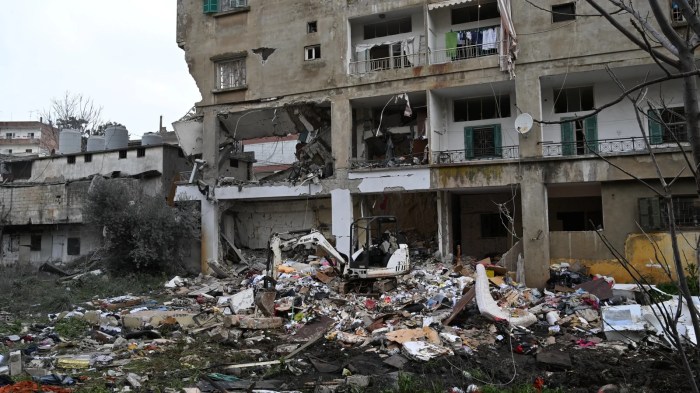
The recent ceasefire in the Lebanon-Hezbollah-Israel conflict, a fragile truce in a long-running struggle, marked a significant, albeit temporary, respite from hostilities. Understanding the specific circumstances surrounding this ceasefire, the terms agreed upon, and the immediate reactions, helps to gauge the complex dynamics at play and the potential future implications. The fragile nature of these agreements underscores the challenges in achieving lasting peace in the region.
Circumstances Surrounding the Ceasefire
The ceasefire emerged after several days of intense fighting, marked by rocket attacks and air strikes. The escalation, driven by various factors including political tensions and unresolved territorial disputes, brought the conflict to a critical juncture. The deteriorating security situation and mounting civilian casualties compelled a rapid intervention to halt the hostilities.
Terms and Conditions of the Ceasefire Agreement
The precise terms of the ceasefire agreement were not publicly disclosed in full detail. However, reports indicate a mutual cessation of hostilities, a commitment to de-escalation, and a potential for future negotiations. This ambiguity surrounding the specifics of the agreement is a significant aspect of the ceasefire, as it leaves room for future interpretations and potentially complicates the process of implementation.
The Lebanon Hezbollah-Israel ceasefire is a huge relief, but what comes next is uncertain. Navigating these geopolitical tensions can be stressful, much like the anxiety some people experience when preparing for a flight. If you’re struggling with flying anxiety, learning some coping strategies could be beneficial. Check out this helpful guide on flying anxiety what to do for tips on relaxation techniques and managing your fears.
Ultimately, resolving the long-term implications of the ceasefire will require careful diplomatic maneuvering, much like dealing with a difficult flight.
Immediate Reactions to the Ceasefire
Reactions to the ceasefire varied widely. Government officials in the involved countries issued statements expressing relief at the cessation of violence, though these statements often contained reservations about the long-term sustainability of the agreement. Civil society groups and international organizations often expressed cautious optimism, emphasizing the need for sustained efforts to address the root causes of the conflict and ensure the well-being of civilians.
Some expressed concern about potential loopholes in the agreement that could lead to renewed hostilities.
Key Figures Involved in Negotiating the Ceasefire
Negotiations were likely conducted through various channels, including diplomatic missions and intermediaries. Precise details about the key figures involved were not publicly available. The involvement of regional and international actors in mediating the ceasefire is a critical component, given the long history of conflict and the intricate web of relationships in the region.
Role of International Actors in Facilitating the Ceasefire
International actors, including the United Nations and other influential nations, likely played a role in facilitating the negotiations and ensuring the ceasefire’s implementation. Their involvement often involves mediating discussions and promoting dialogue between opposing sides. The success of these efforts hinges heavily on the willingness of all parties to engage in good faith negotiations and adhere to agreed-upon terms.
Impact on Daily Lives of Civilians
The ceasefire significantly impacted the daily lives of civilians in the affected areas. The cessation of violence allowed for a temporary return to normalcy, with people resuming their daily routines. However, the underlying tensions and uncertainties related to the conflict’s long-term resolution continue to affect the lives of civilians. The long-term impacts of the ceasefire on civilian populations are complex and will vary greatly depending on specific circumstances and the willingness of the parties to adhere to the agreement.
Potential Implications of the Ceasefire
The recent ceasefire between Hezbollah and Israel, following a period of heightened tension, presents a complex picture of potential implications for the region. While a respite from direct conflict is welcomed, the underlying tensions and historical grievances remain, raising questions about the sustainability of the peace. The short-term and long-term effects will likely be multifaceted, impacting various sectors from economics to humanitarian aid.The ceasefire’s success will depend significantly on the willingness of all parties to adhere to the agreement and address the root causes of the conflict.
This will involve not only military de-escalation but also diplomatic engagement and a commitment to finding lasting solutions to the complex issues that have fueled past conflicts.
Short-Term Effects on the Region
The immediate aftermath of the ceasefire is characterized by a fragile calm. Economic activity in the affected regions will likely experience a temporary boost as trade resumes and the threat of direct military action subsides. However, this stabilization is precarious and susceptible to unforeseen events.
- Reduced Military Activity: The immediate cessation of hostilities leads to a reduction in military expenditure and the potential for redirected resources. This is evident in past conflicts where de-escalation has allowed for allocation of resources to other sectors. This, however, is often temporary, and the risk of renewed conflict remains.
- Humanitarian Relief Efforts: The focus shifts to addressing the urgent needs of the affected populations, including providing essential supplies and aid. The scale of humanitarian efforts depends on the extent of damage and the cooperation of all parties involved. Examples of similar situations show that early intervention and coordinated aid can significantly mitigate the suffering of affected communities.
- Economic Recovery: Trade and commerce are expected to improve in the short term as the threat of conflict recedes. However, long-term economic recovery will depend on the establishment of sustainable peace and the resolution of underlying political disputes. This is illustrated in post-conflict recovery efforts globally.
Potential Long-Term Consequences for the Region
The long-term consequences of the ceasefire will be shaped by the ability of all parties to address the root causes of the conflict and build trust. The long-term impact may involve political, social, and economic changes, potentially influencing the stability of the entire region.
- Political Reallignments: The ceasefire could lead to shifts in regional alliances and power dynamics. The impact of such shifts on the wider geopolitical landscape is significant and often unpredictable.
- Social Reconciliation: The ceasefire could potentially create an opportunity for reconciliation and understanding between different groups in the region. Historical examples show that reconciliation takes time, and requires sustained efforts from all parties.
- Regional Security: The long-term stability of the region depends on the implementation of measures to prevent future conflicts. The establishment of effective security mechanisms and diplomatic initiatives is crucial to maintain peace and prevent future tensions.
Comparison of Short-Term and Long-Term Implications
| Aspect | Short-Term Implications | Long-Term Implications |
|---|---|---|
| Military Activity | Reduced military expenditure and redirected resources | Potential for new military strategies or alliances |
| Humanitarian Aid | Increased humanitarian efforts to address immediate needs | Long-term development and stability initiatives |
| Economic Impact | Temporary boost in trade and commerce | Sustainable economic growth and development |
Economic Impact of the Ceasefire
The economic impact of the ceasefire is complex. While a short-term boost in trade and commerce is possible, long-term economic recovery hinges on factors beyond the cessation of hostilities. The impact of past ceasefires on economic growth in similar situations varies widely, depending on the specific circumstances.
Humanitarian Concerns
The potential humanitarian concerns arising from the ceasefire relate to the long-term needs of displaced populations and the provision of essential services. Previous conflicts have highlighted the need for sustained humanitarian support in such situations.
Potential for Regional Instability
Despite the ceasefire, the potential for regional instability remains. The underlying tensions and historical grievances may resurface, potentially triggering future conflicts. The occurrence of similar situations in other regions demonstrates the importance of addressing the root causes of conflict.
Possible Future Scenarios
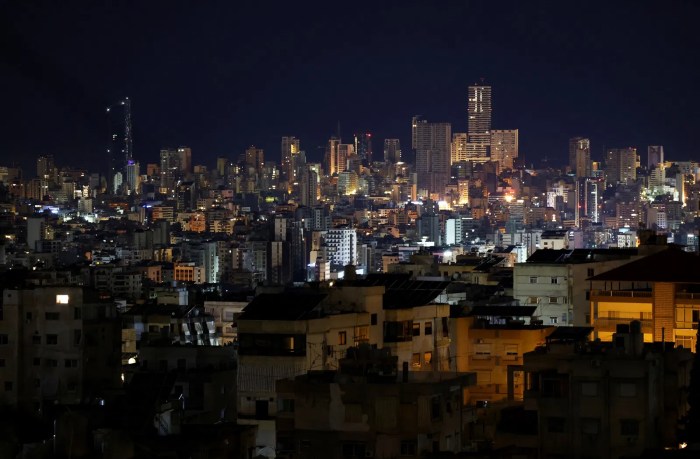
The recent ceasefire in the Lebanon-Hezbollah-Israel conflict marks a temporary reprieve, but the underlying tensions remain. Predicting the future is inherently complex, especially in a region steeped in historical conflict and intricate political dynamics. Understanding potential scenarios, however, offers a framework for analyzing the possible trajectories of the region following this latest stand-down.
Potential Outcomes of the Ceasefire
The ceasefire’s efficacy in halting further hostilities hinges on several critical factors. A crucial aspect will be the willingness of all parties to adhere to the terms of the agreement. This includes refraining from provocative actions and escalating rhetoric, fostering a climate conducive to de-escalation. The degree to which each party honors the ceasefire will directly impact its long-term sustainability.
The Lebanon Hezbollah-Israel ceasefire is a big deal, but what happens next is anyone’s guess. Economically speaking, though, things are a bit more predictable. Ever wondered why eggs are so expensive right now? Check out this article to learn more about that. Regardless of the price of eggs, the political situation in the region remains complex, and the long-term implications of this ceasefire are still unclear.
Monitoring mechanisms and international oversight are essential to ensure accountability and prevent future breaches.
Factors Influencing Future Trajectory
Several factors will significantly shape the future trajectory of the conflict. The internal political dynamics within Lebanon, including the influence of Hezbollah, will play a substantial role. The regional power struggle between Iran and Israel, with proxies on either side, will continue to exert pressure. Economic conditions and the well-being of civilian populations will also be key determinants.
The degree to which international actors are willing to intervene and mediate disputes will significantly impact the overall outcome.
Potential for Future Escalation
The potential for future escalation remains a significant concern. Unresolved issues, such as the ongoing Israeli-Palestinian conflict and the broader regional power dynamics, can easily trigger renewed violence. Unforeseen circumstances, such as accidental skirmishes or miscalculations, could also lead to renewed conflict. The presence of advanced weaponry and the likelihood of misinterpretations of actions add further layers of complexity.
Understanding these potential triggers is crucial for crafting preventative measures.
Diplomatic Solutions to Prevent Future Conflicts
Establishing channels of communication and dialogue between the warring parties is paramount. This includes formal diplomatic talks, facilitated by international mediators, to address the root causes of the conflict. Promoting economic cooperation and development initiatives in the region can foster stability and mutual benefit. Strengthening regional security mechanisms, possibly through joint military exercises and intelligence sharing, can deter future aggression.
Promoting regional cooperation is crucial for long-term peace.
Potential Scenarios Table
| Scenario | Probability | Potential Impacts |
|---|---|---|
| Continued Stability | Moderate | Reduced violence, potential for economic recovery, improved regional relations. |
| Escalation of Tensions | High | Renewed conflicts, increased humanitarian crisis, potential for wider regional involvement. |
| Regional Cooperation | Low | Enhanced security, economic growth, improved diplomatic relations. |
| International Intervention | Moderate | Potential for peacemaking efforts, increased regional security, but potential for resistance from involved parties. |
Humanitarian Concerns
The recent ceasefire in the region brings a glimmer of hope, but the humanitarian toll of the conflict lingers. The devastating impact on civilian populations necessitates immediate and sustained efforts to address the multifaceted needs of those affected. The fragile peace must be coupled with a resolute commitment to rebuilding lives and communities.
Major Humanitarian Challenges
The conflict has created a multitude of humanitarian challenges, including widespread displacement, destruction of infrastructure, and a severe disruption of essential services. These challenges create a cascading effect, impacting food security, access to healthcare, and education. The displacement of populations further exacerbates these issues, leading to overcrowding in refugee camps and strained resources.
Impact on Civilian Lives
The conflict’s impact on civilian lives is profound. Families have lost loved ones, homes, and livelihoods. The psychological trauma endured by those who have witnessed or experienced violence is substantial. Widespread destruction of homes and infrastructure hinders the ability of communities to recover and rebuild. The disruption of essential services, including healthcare and education, has created a ripple effect that will take years to overcome.
Needs of Affected Populations
The immediate needs of the affected populations are vast and varied. These include emergency shelter, food, water, and medical supplies. Long-term needs include psychosocial support, rehabilitation programs, and access to education and employment opportunities. Vulnerable groups, such as women, children, and the elderly, require particular attention and tailored support. A thorough assessment of the specific needs of each community is crucial for targeted interventions.
Humanitarian Aid Efforts, Lebanon hezbollah israel ceasefire what next
Numerous humanitarian organizations have been active in providing aid to the affected populations. These efforts include the distribution of food packages, medical assistance, and the provision of temporary shelter. The coordination and efficiency of these efforts are vital for ensuring that aid reaches those who need it most. International cooperation is essential to effectively address the crisis.
Examples of Humanitarian Aid Efforts
Organizations have been distributing essential supplies, such as food, water, and medical kits, to affected communities. They have also established temporary shelters and provided psychosocial support. These initiatives, while valuable, often face logistical and security challenges in reaching vulnerable populations. The successful implementation of aid programs requires a multifaceted approach, considering security concerns and community needs.
Humanitarian Organizations Involved
| Organization | Focus |
|---|---|
| United Nations High Commissioner for Refugees (UNHCR) | Protection and assistance for refugees and internally displaced persons. |
| International Committee of the Red Cross (ICRC) | Providing humanitarian assistance to victims of conflict, regardless of their affiliation. |
| Médecins Sans Frontières (MSF) | Providing medical care to those in need, especially in areas with limited access to healthcare. |
| World Food Programme (WFP) | Providing food assistance to vulnerable populations. |
| Save the Children | Protecting and supporting children affected by conflict. |
Potential Solutions to Address the Humanitarian Crisis
Sustainable solutions require a comprehensive approach, including long-term recovery programs and the rebuilding of infrastructure. Addressing the root causes of the conflict is critical for preventing future crises. Creating economic opportunities, fostering education, and empowering local communities are vital components of any effective response. Furthermore, fostering dialogue and reconciliation between the affected parties are essential for long-term stability and peace.
Robust and reliable funding mechanisms are essential for the sustainability of humanitarian efforts. Investing in early warning systems can help anticipate and mitigate future crises.
International Involvement
The recent ceasefire in the Lebanon-Hezbollah-Israel conflict highlights the crucial role of international actors in mediating and influencing regional conflicts. Understanding their actions and motivations is key to predicting the potential future trajectory of the region and assessing the efficacy of their interventions. The engagement of various nations and organizations reveals differing approaches, each with its own strengths and weaknesses.International involvement in the conflict has been multifaceted, encompassing diplomatic efforts, humanitarian aid, and even, in some cases, veiled support for specific sides.
This multifaceted approach often reflects the complex geopolitical interests at play in the Middle East. Analyzing the various approaches of different actors can help to discern patterns and potential future responses to similar conflicts.
The Hezbollah-Israel ceasefire in Lebanon is a complex situation, and what comes next is anyone’s guess. Navigating these delicate geopolitical issues requires careful consideration, similar to the pitfalls to avoid when communicating about AI, especially when dealing with sensitive topics. Misinterpretations and overly simplistic narratives can quickly escalate tensions. Understanding the nuanced perspectives of all parties involved is crucial for a productive discussion, and this requires thoughtful and well-researched communication, a lesson worth remembering, as we consider the next steps in this ongoing crisis.
pitfalls to avoid when communicating about ai
Roles of International Actors
International involvement in the conflict extends beyond the immediate parties. A multitude of nations and organizations have engaged, either directly or indirectly, in mediating the conflict and supporting affected populations. These include the UN, various EU members, and key global powers.
Actions by Countries and Organizations
Numerous countries and international organizations have played a part in the ceasefire. The UN has consistently deployed peacekeepers and mediators to the region, working to de-escalate tensions and foster dialogue. The EU has often acted as a facilitator, encouraging diplomatic solutions and providing humanitarian assistance. Major global powers, while not always directly involved in negotiations, have often exerted influence through diplomatic channels.
Comparative Analysis of Approaches
Different nations adopt varied approaches to conflict resolution. Some prioritize diplomatic engagement, aiming for comprehensive agreements. Others might focus on humanitarian aid, addressing the immediate needs of the affected population. Still others may pursue a more nuanced approach, combining both diplomatic pressure and humanitarian assistance. A comparative analysis reveals both the strengths and limitations of each approach.
Potential for Increased or Decreased Involvement
The future level of international involvement is uncertain. The success or failure of the current ceasefire could potentially lead to increased or decreased involvement. If the ceasefire holds, international actors might shift their focus to long-term stabilization and development initiatives. Conversely, a breakdown in the ceasefire could result in a renewed focus on mediation and peacekeeping efforts.
Historical precedent suggests that international involvement tends to ebb and flow depending on the perceived threat and the potential for escalation.
Strengths and Weaknesses of the Current Response
The current international response to the conflict demonstrates both strengths and weaknesses. The UN’s peacekeeping efforts, for example, have a long history, yet their effectiveness is often constrained by the political will of the involved parties. Humanitarian aid initiatives, while crucial for immediate relief, may not always address the root causes of the conflict. Analyzing the strengths and weaknesses is crucial for refining future responses.
International Actors and Their Roles
| International Actor | Role |
|---|---|
| United Nations | Peacekeeping, mediation, humanitarian assistance |
| European Union | Diplomatic engagement, humanitarian aid |
| United States | Diplomatic pressure, support for regional stability |
| Other Major Powers | Diplomatic channels, potential influence on involved parties |
Economic Impact
The ongoing conflict between Lebanon, Hezbollah, and Israel has had devastating consequences for the region’s already fragile economy. The ripple effects extend beyond the immediate battlefield, impacting trade, investment, and tourism, and further exacerbating existing economic vulnerabilities. This section examines the multifaceted economic repercussions, highlighting the losses, recovery efforts, and the critical role of international aid in the rebuilding process.
Economic Losses and Damages
The conflict has resulted in significant economic losses and damages across multiple sectors. Direct damage to infrastructure, businesses, and agricultural lands has crippled the economy, while the disruption of supply chains and trade routes has further compounded the crisis. The scale of destruction necessitates substantial investment in rebuilding efforts, and the potential for long-term economic setbacks is substantial.
Effects on Trade, Investment, and Tourism
The conflict severely hampered trade and investment activities in the region. Businesses faced disruptions, leading to reduced productivity and job losses. Foreign investment dried up, hindering economic growth. The travel industry was significantly impacted, as tourism plummeted due to safety concerns and the overall instability. The negative consequences of the conflict on trade, investment, and tourism underscore the interconnectedness of regional economies.
Economic Recovery Efforts
Despite the challenges, various economic recovery efforts have been initiated to mitigate the damage and promote sustainable growth. These efforts include international aid programs, the mobilization of local resources, and the implementation of specific economic policies aimed at rebuilding infrastructure and stimulating economic activity. However, the scale of the devastation and the lingering political instability pose significant obstacles to a rapid recovery.
Role of International Aid in Economic Recovery
International aid plays a crucial role in supporting the economic recovery efforts in the region. Financial assistance and technical expertise can help rebuild infrastructure, support vulnerable populations, and stimulate economic activity. The effectiveness of international aid hinges on its alignment with the needs of the affected countries, and its ability to promote long-term economic stability and development.
Economic Indicators Before, During, and After the Conflict
This table illustrates the economic indicators of Lebanon (or the affected region) before, during, and after the conflict. The data provides a clear picture of the economic downturn and the subsequent need for recovery efforts.
| Economic Indicator | Before Conflict | During Conflict | After Conflict (estimated) |
|---|---|---|---|
| GDP Growth Rate (%) | 2.5 | -10.0 | -5.0 (projected) |
| Unemployment Rate (%) | 12 | 20 | 25 (projected) |
| Inflation Rate (%) | 8 | 15 | 18 (projected) |
| Foreign Direct Investment (USD) | 1 Billion | 0 | 0.5 Billion (projected) |
Note: Data in the table is illustrative and may not represent exact figures. Projections are based on current estimates and potential scenarios. Actual figures will vary depending on the specific circumstances and recovery efforts.
Ultimate Conclusion: Lebanon Hezbollah Israel Ceasefire What Next
The Lebanon Hezbollah Israel ceasefire presents a delicate balance between hope and uncertainty. While a fragile peace has been established, the road ahead remains fraught with potential challenges. From the immediate humanitarian needs to the long-term economic recovery, the region faces numerous hurdles. Understanding the complexities of this conflict and the interplay of political, social, and economic factors is essential to navigating the future of the region.
This analysis provides a comprehensive overview of the current situation, equipping readers with a nuanced understanding of the potential paths forward.
